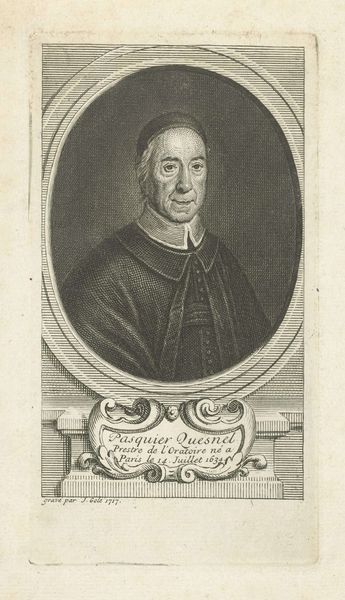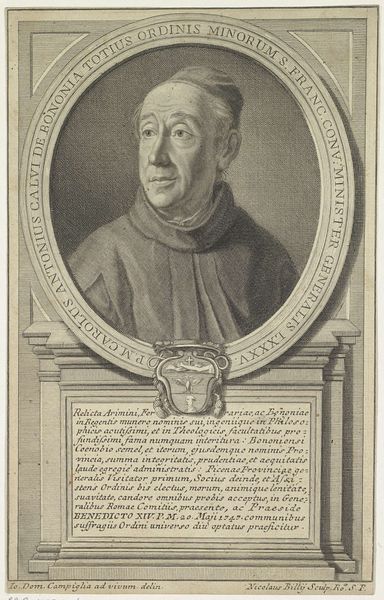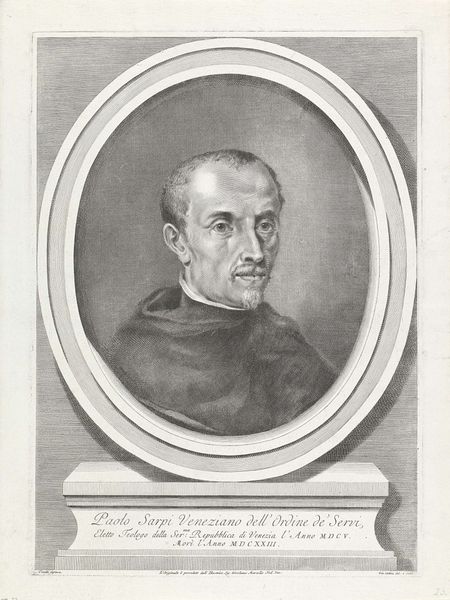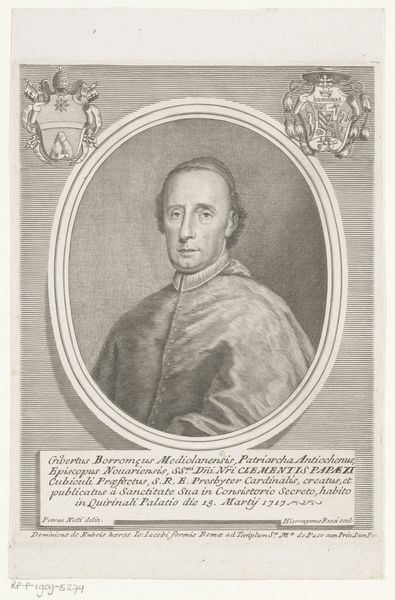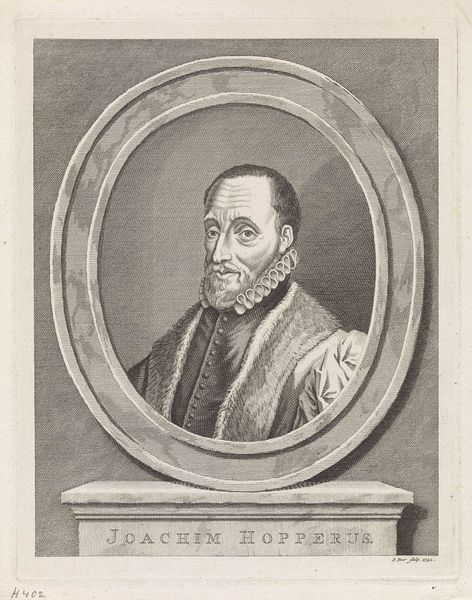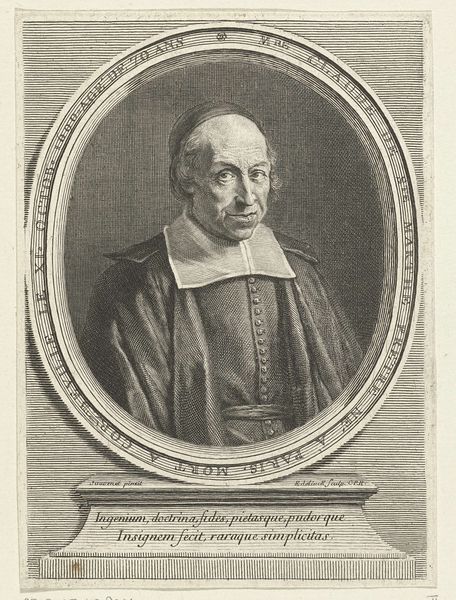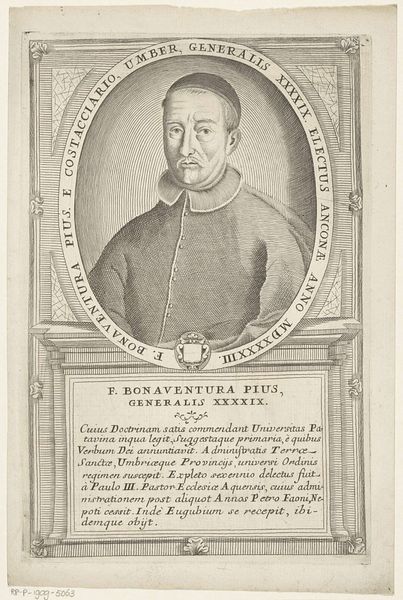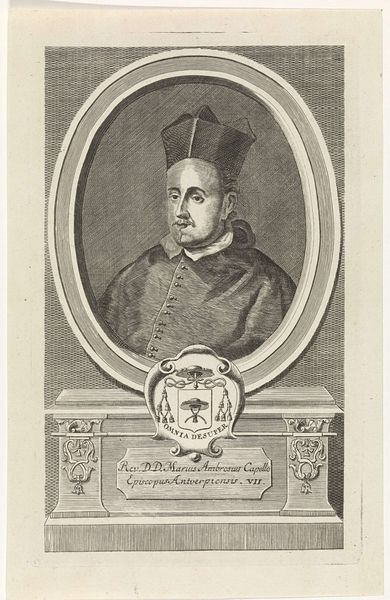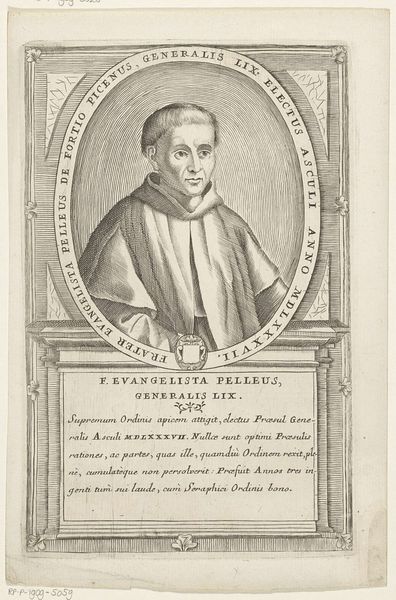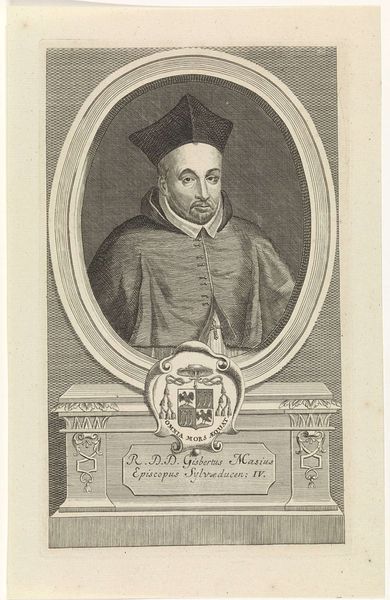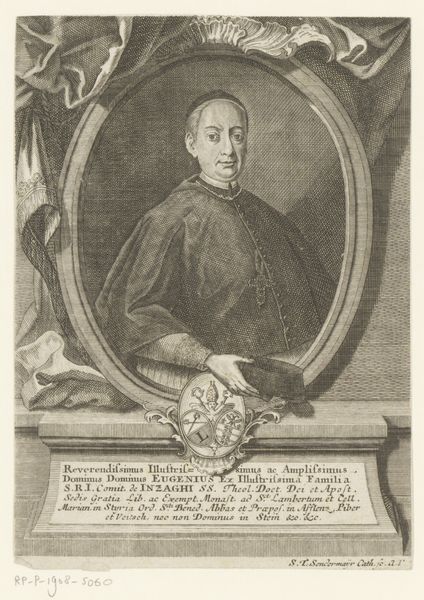
print, engraving
#
portrait
#
baroque
# print
#
old engraving style
#
engraving
Dimensions: height 140 mm, width 80 mm
Copyright: Rijks Museum: Open Domain
Curator: This is a print titled "Portret van Pasquier Quesnel," dating roughly from 1719 to 1727, and part of the Rijksmuseum's collection. The Baroque engraving is by Marie-Anne-Hyacinthe Hortemels. Editor: Ah, an old soul gazes out at us! Immediately, I'm struck by how… deliberate it feels. You know, like every single etched line serves a grand purpose. It's almost like looking at a philosophical treatise made visual. Curator: The print portrays Pasquier Quesnel, a rather influential French Jansenist theologian. Prints like this served a very important role at the time, in disseminating imagery of important figures to a broad audience, and further, in creating specific perceptions of their character and station. Editor: So, public relations, eighteenth-century style! I like how the artist rendered his face—there's a real weight of thought etched around his eyes, not just lines from age, but experience and a hint of sadness. I get the sense he might have carried a cross or two. Is the somewhat severe geometric foundation below part of the print? Curator: Indeed it is. It's a constructed frame within the print that holds the inscription, essentially stating Quesnel's identity and credentials: "Priest of the Oratory, born in Paris…” This method served to firmly anchor him in terms of status, lineage, and reputation. Editor: It's interesting how this formal pedestal-inscription combo interacts with the more free-flowing Baroque portrait style in the oval above. It almost feels like a negotiation, doesn’t it? Between individual personality and the demands of the institution. And is it just me, or does the overall pale color, punctuated with deep, almost gothic, dark strokes, make the artwork a bit gloomy? Curator: Given the often contentious nature of Quesnel's theological positions and the controversies surrounding Jansenism at the time, it would stand to reason that such portraits aimed to emphasize dignity, seriousness of purpose, and intellectual gravitas. This seriousness visually legitimized Quesnel, helping garner him and his religious order authority within the political and social landscape. Editor: Right! So it's propaganda in the form of…a mildly glum headshot? But propaganda doesn’t necessarily have to mean something malicious or evil; at its simplest it’s just persuasion via artistic representation. He probably needed that backing. He probably suffered some setbacks during the wars that swept through Europe in the seventeenth and eighteenth centuries, for instance. Anyway, what a fascinating collision of art, religion, and historical spin. Thanks for giving me the historical perspective, it gave me a lot to think about! Curator: It's crucial to examine art like this in the context of its creation and function; the goal was much more than just pictorial representation. It’s been illuminating to see how the portrait speaks to you on an artistic level.
Comments
No comments
Be the first to comment and join the conversation on the ultimate creative platform.
